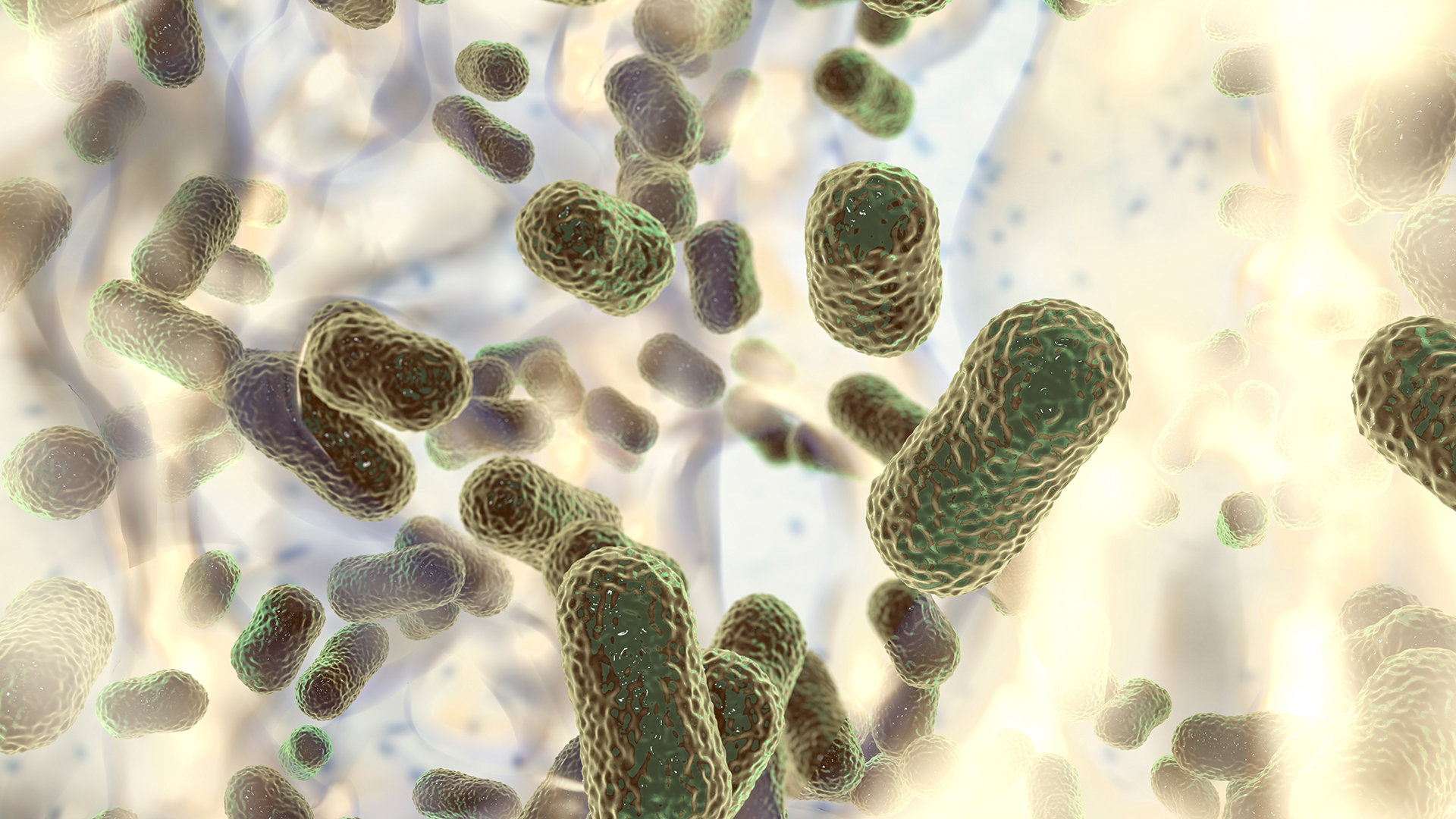
A newly discovered antibiotic can sidestep the defenses of a dangerous, drug-resistant bacterial species.
The drug targets CRAB, or carbapenem-resistant Acinetobacter baumannii, which shows resistance to most existing antibiotics. However, the newfound antibiotic kills CRAB using an attack strategy that's never been seen before in antibacterial drugs, and this strategy is highly targeted, affecting only the one species of bacteria.
"The advantage of a novel class of fully synthetic antibiotic is that bacteria have never seen this," said Kenneth Bradley, one of the drug's developers and head of infectious diseases discovery at Roche Pharma Research and Early Development in Basel, Switzerland. Thus, the existing shields that CRAB uses to fend off antibiotics can't block the new drug's attacks.
Bradley and collaborators at Roche and Harvard University published a pair of papers describing the discovery and workings of the new antibiotic on Jan. 3 in the journal Nature. The drug, named zosurabalpin, is currently being tested in early-stage safety trials in humans.
"This is very promising in that this is a new drug class and a new drug target," Paul Hergenrother, a professor of chemistry at the University of Illinois Urbana-Champaign who wasn't involved in the research, told Live Science. "One would not expect cross-resistance with antibiotics that hit other targets."
Related: Dangerous 'superbugs' are a growing threat, and antibiotics can't stop their rise. What can?
A brand-new antibiotic
CRAB has been flagged as an "urgent" threat in the U.S. due to its extensive resistance. The microbe causes blood, urinary tract, lung and wound infections, most often in people in health care settings, and it poses a particular threat to people with weak immune systems and those who need catheters or ventilators.
The bacterium is "gram-negative," meaning it has a cell wall that's surrounded by a membrane. It's been more than 50 years since a new class of antibiotic that works against gram-negative bacteria was brought to market. That's partly because it's difficult to find drugs that can penetrate the microbes' outer membranes and stay inside long enough to do their job, Hergenrother said.
The study authors aimed to help close this gap by hunting for new types of antibiotics. "Instead of making new versions of the existing antibiotic scaffolds … we wanted to start with something completely different," Bradley said.
They began by broadly screening a library of nearly 45,000 chemical compounds for signs of activity against different bacteria, including A. baumannii. Crucially, the library included synthetic compounds with unique properties unlike many seen in drug companies' standard libraries, which likely opened a door for discovery, Hergenrother noted.
This screen revealed a compound that they would modify to create the drug zosurabalpin. The initial compound showed similar potency against strains of A. baumannii with different degrees of resistance, and it didn't work on other types of disease-causing bacteria. The team tweaked the compound to be even more potent against A. baumannii, and it proved effective at clearing infections in mice and rats.
"But at the same time, we identified safety flags," Bradley noted. In addition to killing A. baumannii, the compound reacted with fat bubbles called lipids in the rodents' blood, harming the animals. The researchers solved this problem by adjusting the compound's electrical charge.
How the new drug works
While working toward the final version of zosurabalpin, the team investigated exactly how the compound kills CRAB: The drug disrupts machinery that's key to building the bacterium's outer membrane.
Bacteria need lipopolysaccharide (LPS) to make the membrane, and machinery transports LPS to the microbe's surface. Zosurabalpin gums up that machinery, but only when it's bound to LPS. The Harvard collaborators also showed that the drug works only on A. baumannii because of the specific component of the machinery it targets.
"They were able to solve an actual atomic-resolution structure of the target bound to zosurabalpin," Bradley explained. "There are actually molecular differences that would prevent the compound zosurabalpin from binding to other species [of bacteria]."
Antibiotics with narrow targets have less chance of disrupting the gut microbiome and other helpful bacteria in the body, Hergenrother said. "A lot of your broad-spectrum antibiotics will really wipe out the gut microbiome," so hopefully, zosurabalpin will prove to be "microbiome-sparing," though that needs to be shown, he said. In addition, by targeting certain microbes, narrow antibiotics don't place widespread pressure on a bunch of bacteria to develop new resistance, Hergenrother added.
That said, CRAB will still be pressured to evolve new resistance strategies against zosurabalpin. "We fully expect that evolution will lead to the emergence of resistance at some point, but at least we're not starting behind the ball on this one," Bradley said. Plus, sometimes to gain resistance to one drug, bacteria become more vulnerable to another or lose some ability to cause disease. This is something that will need to be studied more in trials.
The ongoing human trials of zosurabalpin are assessing the drug's safety profile in healthy volunteers, Bradley said. Looking beyond zosurabalpin, the drug's advent raises the idea that LPS could be a promising new target for future antibiotics that work on other gram-negative bacteria, he added.
Ever wonder why some people build muscle more easily than others or why freckles come out in the sun? Send us your questions about how the human body works to community@livescience.com with the subject line "Health Desk Q," and you may see your question answered on the website!







